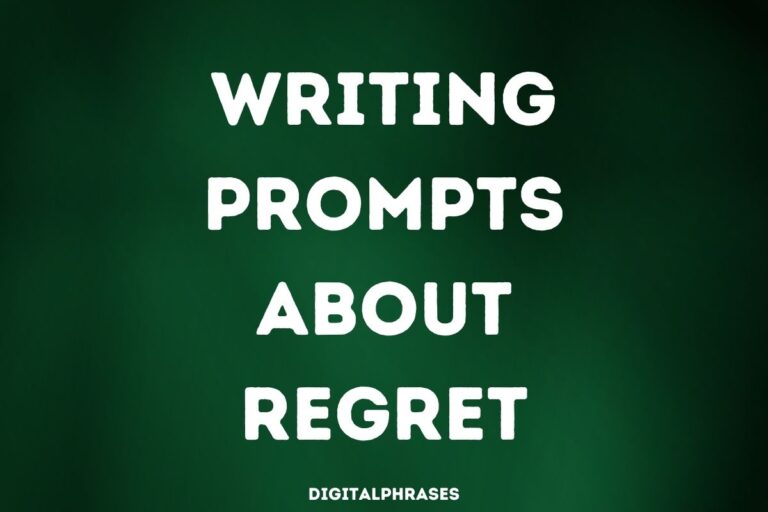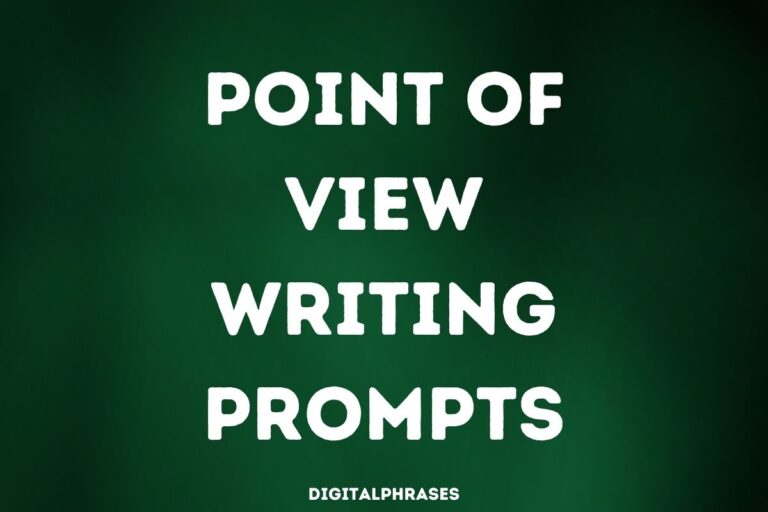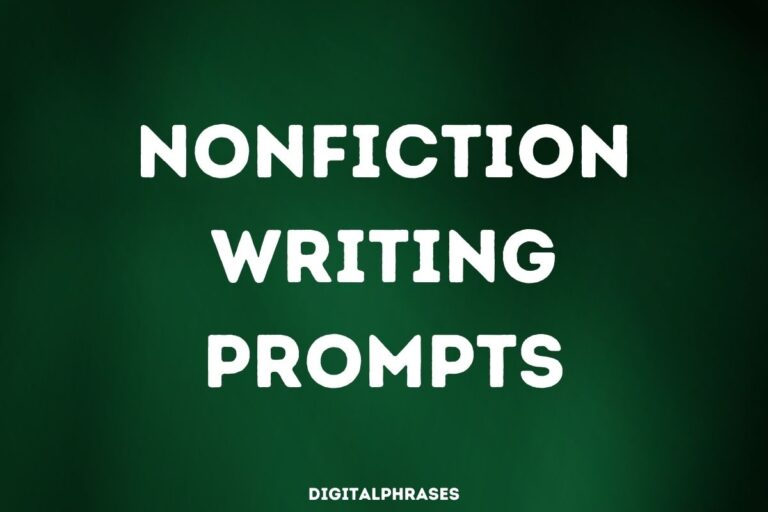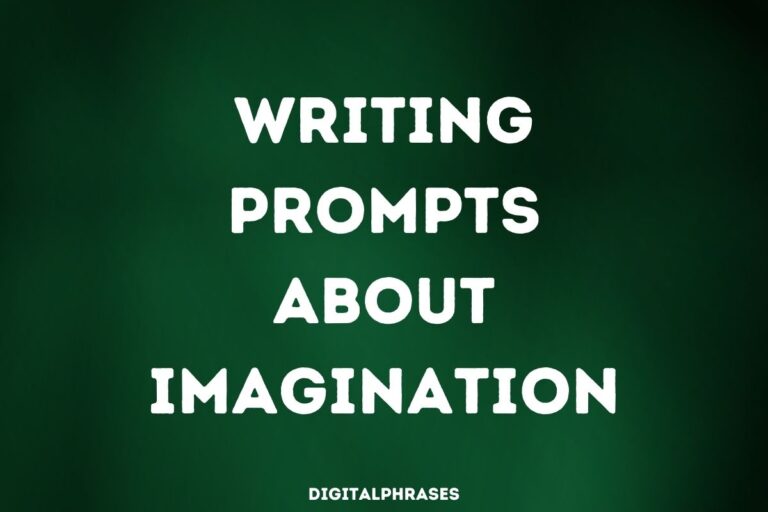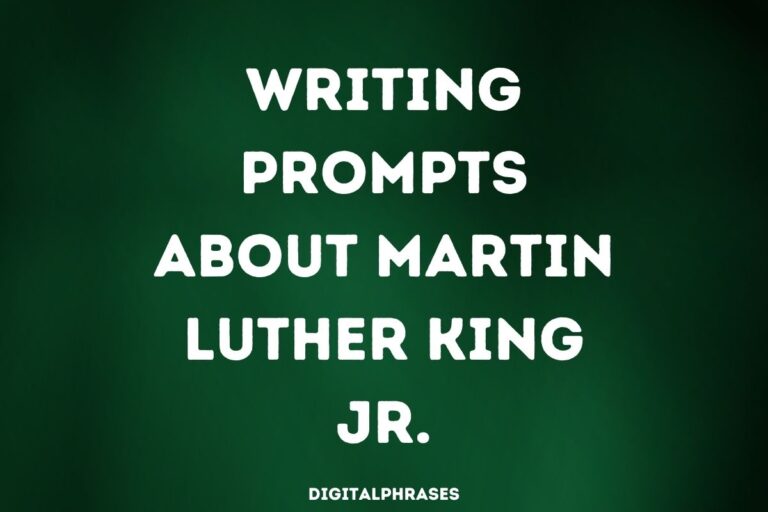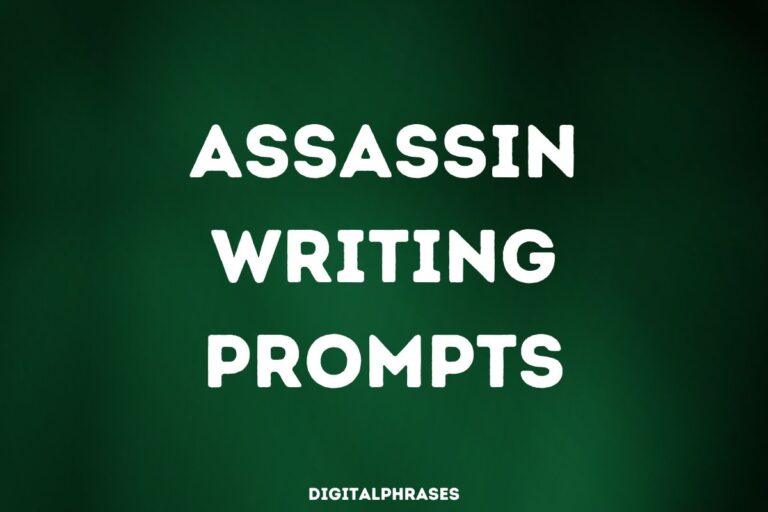32 Writing Prompts About Insects
Feeling stuck in a writing rut?
Look no further than your own backyard and the creepy crawly insects crawling across it.
They can be the key to unlocking awesome stories and characters.
Finding it hard to believe?
We’ve got some prompts below that will have you itching (pun intended) to grab your pen and dive into the fascinating world of insects.
So don’t bug out, get ready to unleash your creativity!
Writing Prompts About Insects
The Secret Society of the Fireflies: Imagine a world in your backyard, unseen by most humans, where fireflies operate an organized secret society. Each firefly carries its own unique flash pattern which acts as a language. As a budding scientist, you’ve just discovered how to interpret these signals. Write a story outlining your discoveries and the surprising messages you decode.
The Hive Mind’s Intelligence: The intelligence of a hive is collective, and many scientists believe it surpasses that of individual insects. Think about a hive of bees that is attempting to solve a complex problem threatening their survival. Construct a narrative demonstrating how collective intelligence helps the bees overcome this problem.
The Butterfly Migration: Every year, millions of monarch butterflies embark on a remarkable journey covering thousands of miles from Canada to Mexico. Imagine you are a scientist tracking this migration. One butterfly, in particular, has a unique marking, and you decide to follow its journey. Pen a story about the incredible adventures of this particular butterfly and what it reveals about migration.
Life Underneath: The Ant Hill An anthill is a bustling city, complete with workers, soldiers, and a queen. Each ant has a role to play. You’re a biologist who has developed a way to miniaturize yourself and experience life within the ant colony. Write about your experience living in this intricate society and the profound lessons it taught you.
The Cricket’s Song: Crickets are known for their distinctive chirping, a sound often associated with quiet summer nights. Each chirp is a message, and you’ve just invented a device that translates these songs. Write a story where the crickets’ chirping leads you to an unexpected discovery.
Metamorphosis of the Butterfly: The transformation of a caterpillar into a butterfly is one of nature’s most magical processes. Suppose you’re a young scientist who can communicate with caterpillars. One of them is about to undergo metamorphosis and is anxious about what is to come. Write a heartwarming story about how you comfort and guide this caterpillar through its transition.
The Mantis Detective: Praying mantises are formidable predators in the insect world. You are an entomologist who has noticed a sudden decline in the local insect population and suspect a group of mantises might be the cause. Write a thrilling narrative about your investigation and how it unfolds.
The Dance of the Bees: Bees communicate through an intricate series of dances. As a scientist, you’ve uncovered a new pattern never seen before, and it seems urgent. Write about the process of decoding this new dance and the urgent message it holds for the future of the hive.
An Unusual Friendship: Spiders are often feared and flies are usually considered a nuisance. You’re a writer who witnesses an unusual interaction between a spider and a fly that defies common understanding. Write a story about this unusual bond, challenging the reader’s preconceived notions about these creatures.
Invasion of the Locusts: Locusts are infamous for their mass invasions that can devastate agriculture. Imagine you’re a farmer who discovers a non-lethal way to deter these insects. Describe your inventive method and its implications for farmers worldwide dealing with similar crises.
The Silent Symphony of the Stick Insects: Stick insects are renowned for their ability to blend in with their surroundings. Suppose you’re a scientist who discovers that these insects communicate through vibrations. Write a narrative about unlocking this silent symphony and the impact of your discovery on understanding insect communication.
The Beetle Architect: Beetles are nature’s tiny architects. Imagine you’re an engineer who gets inspiration from a particular beetle’s nest design to solve a significant architectural problem. Pen a story highlighting your journey from the inspiration to the application of your solution.
Caterpillar Kindergarten: A caterpillar’s life involves a lot of learning before it turns into a butterfly. Imagine you are a kindergarten teacher who uses the caterpillar’s journey to teach children about growth and change. Write an engaging narrative about how these lessons shape your students’ perspectives on their personal growth and development.
The Ladybug Healer: Ladybugs are often associated with good luck. One day, a ladybug lands on you and leaves behind an iridescent dust that heals a small wound on your hand. As a scientist, you investigate this phenomenon. Write a story about your discoveries and their potential medical implications.
The Silk Worm’s Gift: Silkworms are known for producing silk, a highly valued material. Suppose you’re a fashion designer who decides to create a sustainable silk farm, causing a significant shift in the fashion industry’s dynamics. Write about your journey, the challenges faced, and the transformation brought about in the industry.
The Dance of the Fire Ants: Fire ants are known for their aggressive nature and complex social structures. One day, you notice a peculiar dance that seems to be a celebration rather than a display of aggression. Write a story deciphering this unusual ritual and the deeper insights it provides into ant culture.
A Bee’s Vision: Bees see the world in a very different light compared to humans, perceiving a wider spectrum of colors. Imagine you’ve developed a pair of glasses that allows you to view the world like a bee. Write a narrative about the breathtaking sights you witness and how it changes your perception of nature.
Dragonfly Time Machine: Dragonflies are ancient insects that have existed for millions of years with little change. As a paleontologist, you discover fossil evidence that reveals an unknown fact about the dragonfly’s ancient history. Create a thrilling narrative about your discovery and how it changes our understanding of the dragonfly’s evolution.
The Symphony of Cicadas: Cicadas are well-known for their loud choruses that can fill a summer night. Suppose you are a musician who is inspired by these sounds to compose a unique piece of music. Write about the creation of your masterpiece and the public’s reaction to this unusual source of inspiration.
Wasp City Planning: Wasps are expert architects, designing complex nests with a variety of chambers. You are an urban planner who takes inspiration from the wasp’s efficient use of space and structure. Write a story about the design and successful implementation of a city plan inspired by a wasp nest.
Moth Mysteries: Moths are often overshadowed by their more colorful relatives, the butterflies. One night, you witness an extraordinary moth species exhibiting an unseen behavior. As an entomologist, you dive deep into this mystery. Write a captivating narrative about your investigation and the surprising secrets of moth behavior it unveils.
A Symbiotic Relationship: Ants and aphids share a fascinating mutualistic relationship, with ants “farming” aphids for honeydew. Imagine you are a biologist who discovers a new aspect of this interaction that could have a significant impact on ecological studies. Write about your observations, your theories, and the ultimate revelation.
The Grasshopper’s Tune: A grasshopper’s song is a classic sound of summer. Suppose you’re a linguist who stumbles upon a new pattern in this song, suggesting a complex language previously unappreciated. Write a story about your journey to decipher this “language” and the breakthroughs you achieve.
The Flight of the Bumblebee: Bumblebees are often subjects of amazement due to their seemingly impossible flight. As an aerospace engineer, you find inspiration in the bumblebee’s flight mechanics to design a new type of aircraft. Write a narrative about your journey from concept to creation and the impact it has on aviation technology.
The Insect Whisperer: As a child, you’ve always had an unusual ability to communicate with insects. Now as an adult working in environmental conservation, you use your talent to aid your mission. Write a heartwarming story about how your unique ability has made a significant difference in preserving biodiversity.
Ecosystem in a Beetle’s Burrow: A beetle’s burrow is more than just a home – it’s a miniature ecosystem hosting various species. As an ecologist, you’re exploring this little world. Write a narrative about your discoveries and their implications for understanding the interconnectedness of life forms.
A Flea’s Adventure: Fleas are known for their remarkable jumping abilities. Imagine you are a flea who has embarked on an epic adventure across various landscapes, meeting different creatures along the way. Craft a thrilling tale from the flea’s perspective detailing its exciting journey.
The Caterpillar’s Dream: A caterpillar is destined to become a butterfly, but what if one caterpillar has a different dream? Suppose you’re a children’s book writer crafting a story about a caterpillar with an unusual ambition. Write a heartwarming tale about this caterpillar’s journey to fulfill its unique dream.
The Language of Scents: Moths have a keen sense of smell that they use for communication and navigation. Suppose you’re a scientist who invents a device that can interpret these scent languages. Write a narrative about the intricate conversations you decipher and the newfound respect you gain for these creatures.
The Ladybug’s Spots: The number of a ladybug’s spots is a significant aspect of its identity. One day, you find a ladybug with an unusual number of spots, leading you to discover a new species. Write about your discovery process and the impact of your findings on the scientific community.
The Praying Mantis’s Prayer: Praying mantises are solitary creatures known for their prayer-like stance. Imagine you’re a photographer who captures a rare and intimate moment in the life of a praying mantis. Write a story about this unique experience and the stunning photographs that capture the heart of the audience.
Ants in Space: In an experiment to understand how living organisms adapt to zero gravity, a colony of ants is sent to the International Space Station. You’re an astronaut observing their behavior. Pen down a fascinating account of the ants’ space adventure and their remarkable adaptability.

